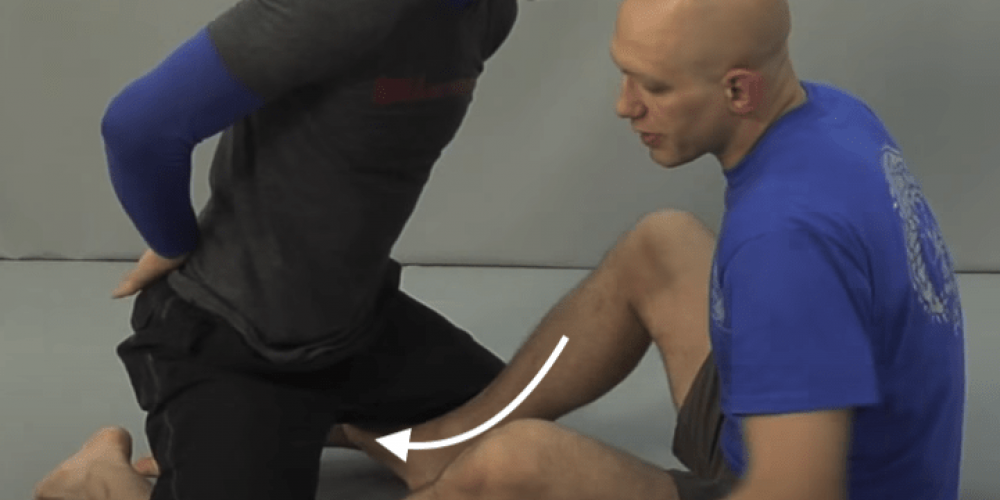The Butterfly Guard is a common position in Brazilian Jiu Jitsu. One person is lying on their back with their legs extended and hooked around their opponent’s hips, controlling their upper body. It’s a position that allows the person on the bottom to defend themselves and look for opportunities to sweep or submit their opponent. However, it’s also a position that can be difficult to pass, as the person on the bottom has a lot of leverage and control.
The Butterfly guard pass is an excellent move for beginners to learn in Brazilian jiu-jitsu class. This move involves controlling your opponent’s position on the ground and blocking their ability to attack you. It is performed by placing your feet on their thighs, pushing through with your shoulders, and creating space. According to the book Brazilian Jiu-Jitsu: Fundamentals of Position Control, “The butterfly guard is an excellent entry into learning the fundamentals of top game maintenance and control” (Craycraft 72). Learning this move is essential to help build your confidence and keep yourself safe on the mats.
Butterfly Guard Pass Mechanics
According to ‘BJJ World’, Brazilian Jiu-Jitsu (BJJ) is a martial art that uses leverage and technique to control an opponent’s body. One technique used to control the opponent while passing their guard is the Leg Drag Guard Pass (1). This technique involves using one’s legs to control the opponent’s legs while passing the guard. It is important to use one’s hips to drive into the side of the opponent’s legs and achieve control (2). After achieving control, one must maintain proper positioning and continue to move the hips to drive the opponent’s legs and take full advantage of the position. As the hips move, one’s arms should control the opponent and protect against possible submissions (3). The technique is effective for passing the guard since it controls the opponent’s legs and it allows the practitioner to gain control of the match. (1) bjjworld.com/leg-drag-guard-pass-fundamentals (2) bjj-world.com/passing-the-guard/pass-the-guard-leg-drag-guard-pass/ (3) grapplingmastery.com/leg-drag-guard-pass/
To complete the butterfly guard pass in generic jiu-jitsu, the first thing to do is to get your hips as far away from your opponent as possible. Next, you need to open up their guard with your feet and make sure your arms are controlling their hips. Finally, pass their legs, continue to the side, and finish the pass with a strong posture and a secured mount. Following these steps, you can perfect the butterfly guard pass and achieve a successful result. Control, precision, and proper technique are essential to a booming pass.
Craycraft, Chad. Brazilian Jiu-Jitsu: Fundamentals of Position Control. Three Rivers Press, 2009.
5 Steps for Passing Butterfly Guard
Here are the steps for passing the Butterfly Guard:
- Start by standing in front of your opponent with your legs shoulder-width apart. Your opponent will lie on their back with their legs extended and hooked around your hips.
- From this position, it’s important to maintain good posture and balance. Keep your weight evenly distributed and your feet shoulder-width apart.
- The next step is breaking your opponent’s grip by prying their legs apart or pulling their ankles towards you. You can also use your hands to push against their knees or thighs to create space.
- Once you have broken your opponent’s grip, you can begin to pass their guard. One option is to step over their legs and establish a half-guard or side control position. Another option is to step between their legs and establish a mount or full guard position.
- As you pass the guard, maintain good posture and control over your opponent’s upper body. You can use a variety of grips and techniques to maintain control and prevent your opponent from regaining the guard.
Here are a few tips to remember when passing the Butterfly Guard:
- Maintain good posture and balance, and keep your weight evenly distributed.
- Use your hands to break your opponent’s grip and create space.
- Practice passing the Butterfly Guard against both sides to become proficient at passing the guard against any position.
- As with any technique, it’s essential to drill the Butterfly Guard pass with a training partner to develop good timing and muscle memory.
I hope these steps and tips help you master the Butterfly Guard pass and improve your Jiu-Jitsu game. Remember to train safely and always listen to your instructor. Happy training!














Comments 0